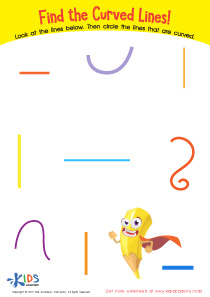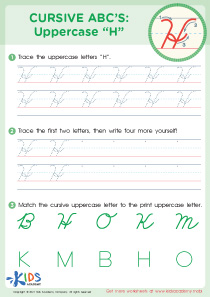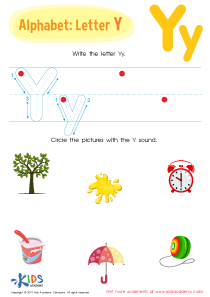Uppercase identification Alphabet Worksheets for Ages 6-7
5 filtered results
-
From - To
Enhance your child's mastery of the alphabet with our engaging Uppercase Identification Alphabet Worksheets designed for ages 6-7. These fun and educational printables help young learners recognize and differentiate between uppercase letters through captivating exercises and activities. Ideal for developing fundamental reading and writing skills, our worksheets stimulate cognitive development while making learning enjoyable. Perfect for use in both classrooms and at home, our expertly crafted resources support teachers and parents in nurturing confident, alphabet-savvy young scholars. Explore our comprehensive collection today and set your child on the path to literacy success!
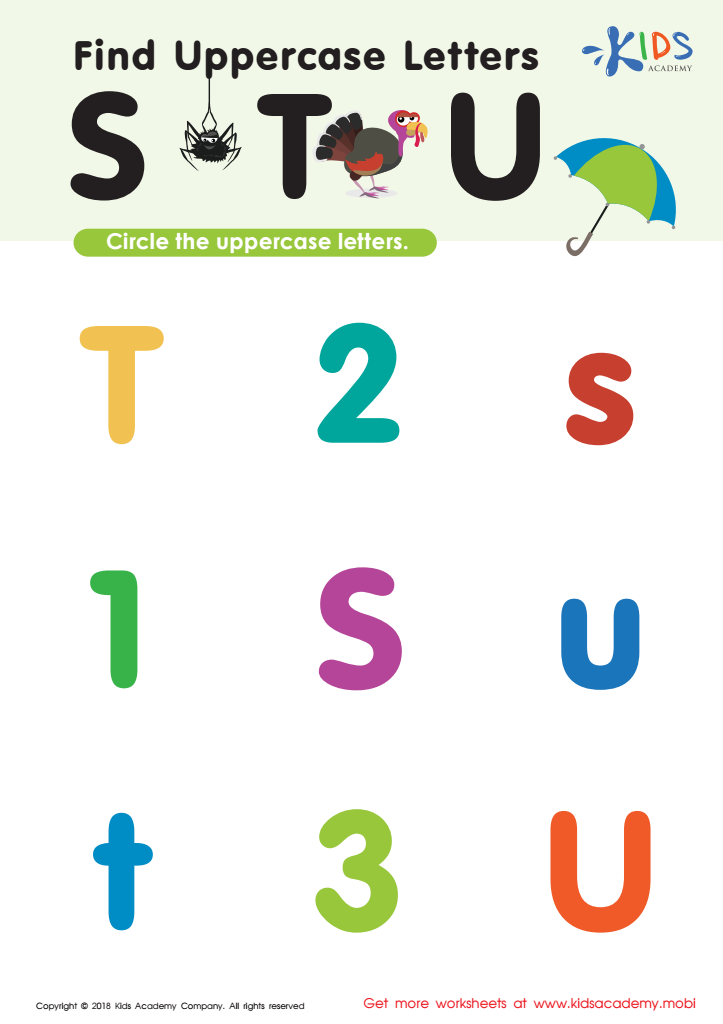

Find Uppercase Letters Worksheet


Find Uppercase Letters J, K, and L Worksheet
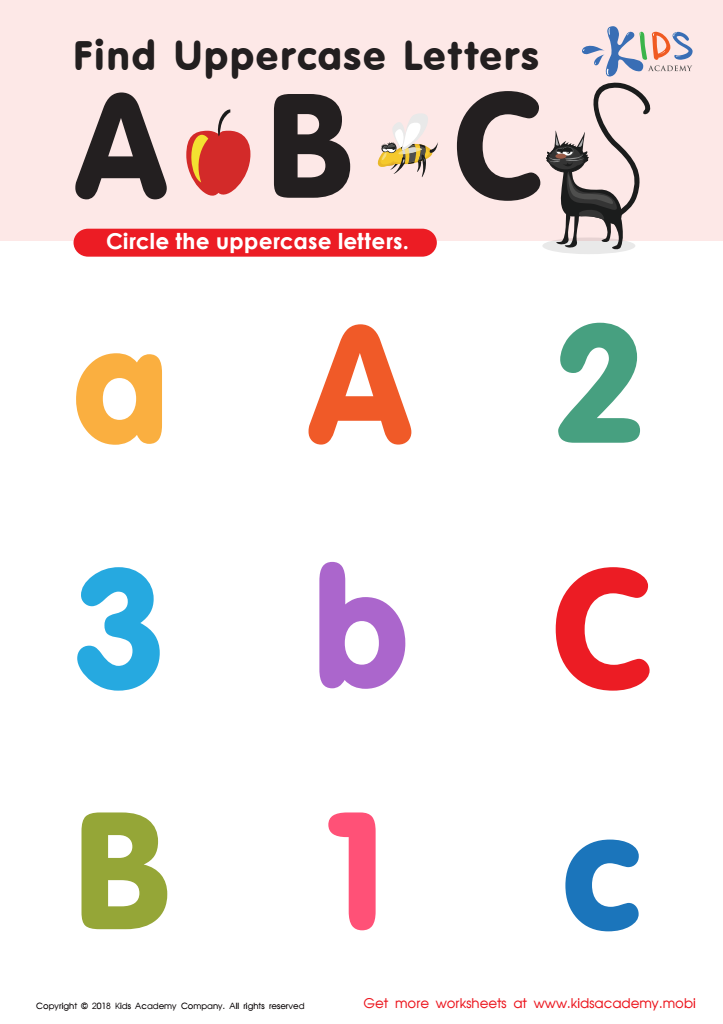

Find Uppercase Letters A, B, and C Worksheet
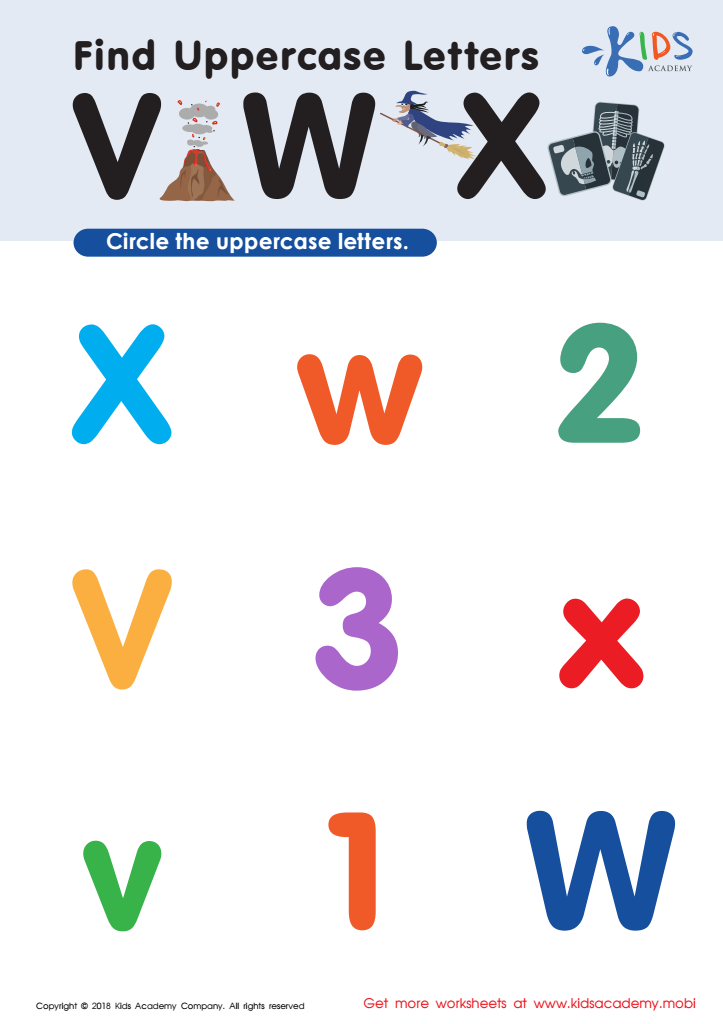

Find Uppercase Letters V, W, X Worksheet


Find Uppercase Letters M, N, and O Worksheet
Uppercase alphabet identification is essential for children aged 6-7, as it lays the foundation for literacy development. At this formative stage, recognizing uppercase letters helps children differentiate between distinct letter shapes, leading to improved reading skills. Uppercase letters are often prominently featured in instructional materials and environmental print, such as signs, labels, and books, making it crucial for children to quickly identify and understand them in varied contexts.
For parents and teachers, emphasizing uppercase recognition supports overall academic success. Kids who master uppercase letters can more easily learn lowercase letters later, bridging the gap to full alphabet knowledge. This dual knowledge boosts confidence and enthusiasm for reading and writing activities.
Moreover, uppercase letter recognition enhances cognitive skills, such as memory and attention to detail. Structured practice with these letters can also foster fine motor skills as children practice writing, contributing to better handwriting over time.
Children who struggle with letter identification may face hurdles in spelling, reading fluency, and comprehension, so early intervention is vital. Parents and teachers who focus on uppercase alphabet learning set the stage for a child's future successes, ensuring they have the skills needed to thrive in educational settings and beyond.
 Assign to My Students
Assign to My Students







.jpg)

